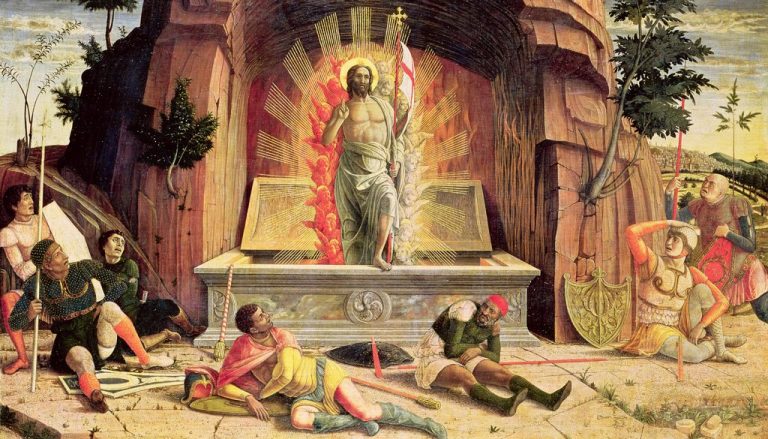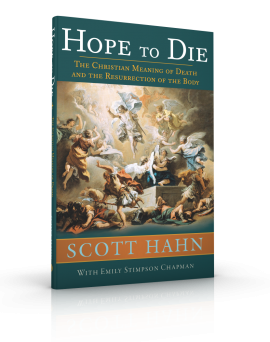By Scott Hahn
Dr. Scott Hahn is the best-selling author of over forty books, including Hope to Die: The Christian Meaning of Death and the Resurrection of the Body. He is the founder and president of the St. Paul Center and holds the Fr. Michael Scanlan Chair of Biblical Theology and the New Evangelization at Franciscan University.

We have come through what may be the strangest Easter in the history of the Church.
In the topsy-turviness of that time, ordinary things suddenly stood out for me in striking ways. When the news stories were at their most somber, I was moved to pray, and I heard the familiar phrases of the basic prayers as if they had just been uttered for the first time.
“Now and at the hour of our death,” I said, and it could very well have been my millionth “Hail Mary.” But now each recitation had an immediacy I had never noticed before.
What was unusual this year was the sustained, universal focus on our mortality — and not just “ours” collectively, but yours and mine specifically. It was one thing to watch the charts with their exponential numbers and curves. It was quite another to feel a twinge when suddenly surprised by a sneeze or a cough.
“Now and at the hour of our death” is a strange phrase because it acknowledges what’s inevitable for us, our earthly end, and brings it into sharp focus—more than fifty times in a typical Rosary.
But as surely as Lent resolves into Easter, thoughts of mortality resolve into the heart of the Gospel of my patron, St. Paul: “Death is swallowed up in victory. O death, where is thy victory? O death, where is thy sting?” (1 Corinthians 15:55-56).
“If for this life only we have hoped in Christ, we are of all men most to be pitied. But in fact Christ has been raised from the dead, the first fruits of those who have fallen asleep” (1 Corinthians 15:19-20).
I reflect on these themes in my new book, Hope to Die: The Christian Meaning of Death and the Resurrection of the Body.
At death, the soul is separated from the body. Jesus, by dying and rising again, opened up the path to reunification. Just as his body and soul were joined once more when he was resurrected. His body was transfigured, glorified. And so too will all the bodies and souls of all the just be reunited when we are resurrected. The body that the soul rejoins will be your body—the same body reading these words right now—but it will also be different. We don’t know how.
“Lo! I tell you a mystery. We shall not all sleep, but we shall all be changed” (1 Corinthians 15:51).
Nobody wants to die, but all of us, I think, would like to advance the change into a glorified body.
Our Lord wants us to be people of hope amid widespread despair. We show—with our lives and everyday kindnesses—that the grace of resurrection is not something far off in the future. The Mystical Body of Christ, unlike the body politic, is alive and thriving, as I believe the recent crisis has shown us.
So please, join me in celebrating this Easter season in hope.
I highly recommend that you read my book Hope to Die: The Christian Meaning of Death and the Resurrection of the Body. I pray that it brings you and yours peace during these tumultuous times.
You Might Also Like
In Hope to Die: The Christian Meaning of Death and the Resurrection of the Body, Scott Hahn explores the significance of death and burial from a Catholic perspective. The promise of the bodily resurrection brings into focus the need for the dignified care of our bodies at the hour of death. Unpacking both Scripture and Catholic teaching, Hope to Die reminds us that we are destined for glorification on the last day.


